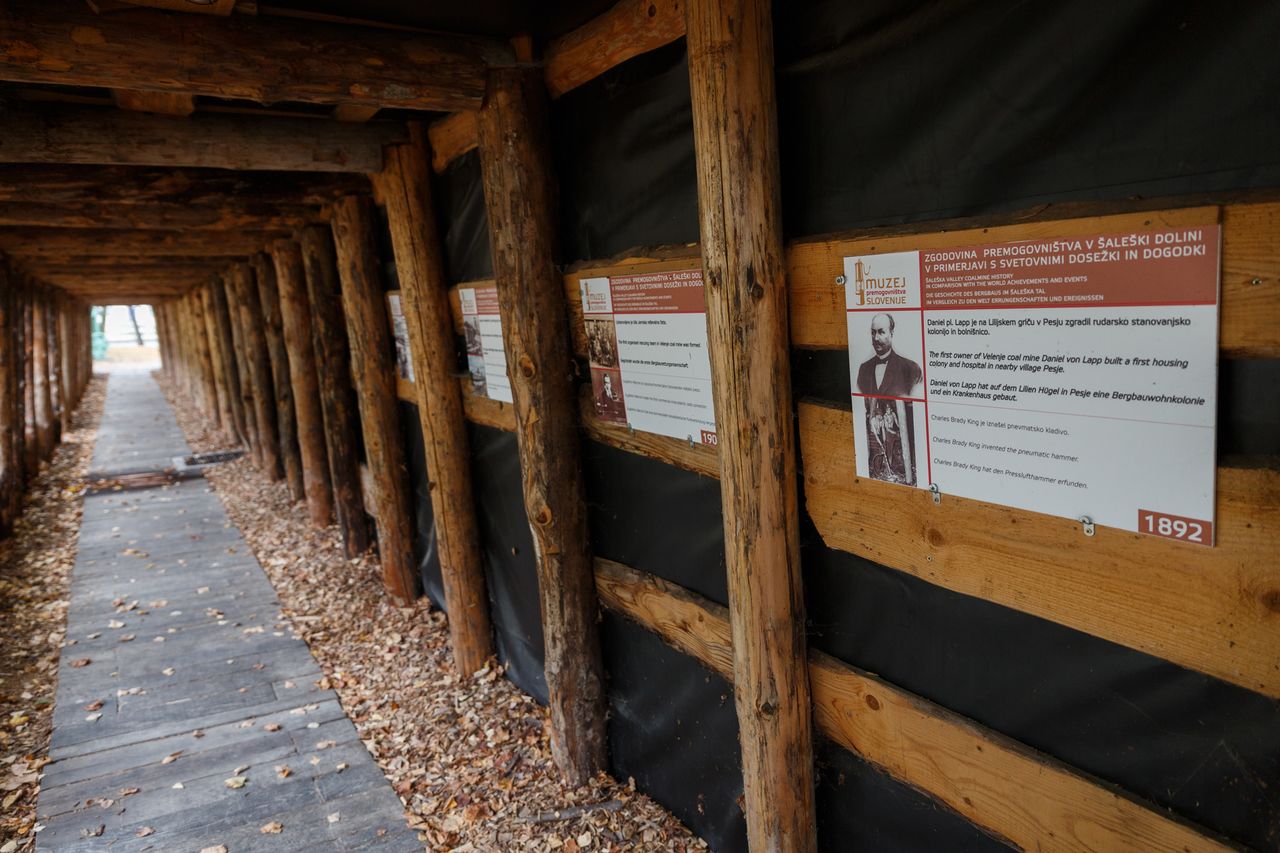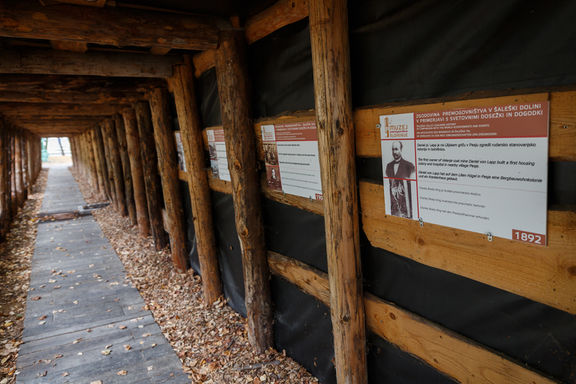Coal Mining Museum of Slovenia
Background
The first ton of coal in the region was extracted in May 1888 and the "Old Shaft", now used for entering the underground part of the museum, was sunk in 1889.
The museum itself was originally established in 1957, opening its doors in 1966 at the Velenje Castle as a joint venture of the Velenje Coal Mine, the Municipality of Velenje and the Velenje Museum. In 1998, when the extraction of coal was relocated to a new working field, the museum moved to its current location, the Škale pit.
Museum displays
The act of entering the underground tunnels is already a part of the museum – one is dressed in mining clothes, overcoat, complete with a helmet and a typical miner's snack. In the tunnels below the mining machinery is displayed, the geological structure is presented, and, by way of recreated scenes and puppets of miners (animated with audio-visual equipment), the life of mine workers is demonstrated. The guided tour is concluded by a ride on the underground railway.
The displays in the above-the-ground part of the museum show the development of Slovene coal mining (tracing its history all the way back to China 3000 years ago), with all of Slovenia's coal mines being presented. A typical coal miner's apartment, presented with furnishings from the period 1920–1930, is also reconstructed.
The museum incorporates an Industrial-Ecological Museum Instruction Centre (IEMIC) which offers a range of educational programmes to schools and community groups.
Art exhibitions and concerts
The museum also runs an art gallery, often presenting well known Slovene visual artists (yet also works of a more regional character, like for example those made at local primary schools). Occasional concerts also take place here. Set 160 meters bellow ground, this is surely the deepest located gallery and concert venue in Slovenia and possibly in the world.
International cooperation and awards
The Coal Mining Museum of Slovenia is a part of the "Route of underground museums", in which seven mining destinations: Velenje, Mežica, Idrija (Slovenia); Cave del Predil (Italy); Hüttenberg, Terra Mystica and Obir Dripstone Caves (Austria) collaborated in a project funded by the EU Phare project.
The museum was also part of the MINHER (Mining heritage: 'Opportunity Mines') project (2013–2014), co-financed by Europe for Citizens programme. Project partnership consisted of seven partners from Middle and Southeastern Europe. Among the main outcomes are a documentary film and a comprehensive web portal on mining heritage.
For its conservation of cultural and technical heritage the Coal Mining Museum of Slovenia received the Ford Motor Company's Conservation and Environmental Grants Programme Award in 2000. The museum was especially commended for outstanding achievements by the Committee for the European Museum of the Year Award in 2001. It was also given the Valvasor Award and various other commendations.
See also
Other mining museums in Slovenia
- Idrija Mine Museum
- Mežica Lead and Zinc Mine Museum
- Mining and Ethnographic Collection, Črna na Koroškem
- Miner's House - Ethnological Collection
- Iron-making, Mining and Palaeontologic Collection in Bucelleni-Ruard Manor, Jesenice
External links
- Coal Mining Museum of Slovenia website
- VR Panoramas of Coal Mining Museum on Virtual Guide to Slovene Museums and Galleries
- The MINHER project website
- "Documentation about mining heritage, tradition and change of mentality", a paper for the ReSource Central Europe project, pdf



